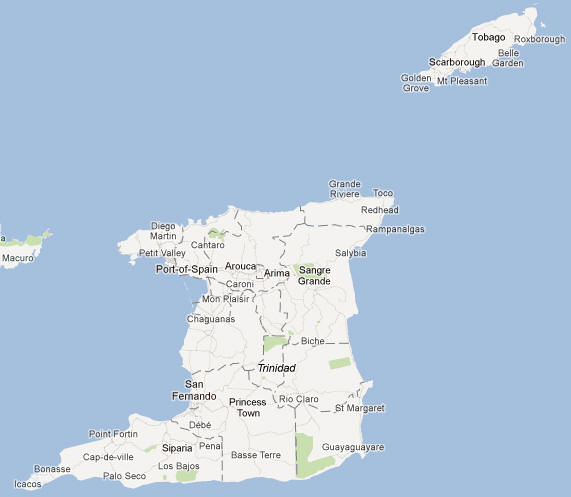Trinidad and Tobago Facts
Trinidad and Tobago, State of the Caribbean; 5 128 km², 1.4 million residents (2019).Trinidad and Tobago consist of two islands. The main island of Trinidad (4,828 km² ), the largest island in the Little Antilles, is located about 25 km east of Venezuela’s coast. Tobago (300 km² ) is located about 30 km northeast of Trinidad. The capital is Port of Spain (50,400 residents, 2012) in Trinidad.

Country facts
- Republic of Trinidad and Tobago / Republic of Trinidad and Tobago
- Country abbreviation: TT
- Area: 5 128 km²
- Population (2019): 1.4 million residents
- Capital: Port of Spain
- Main language: English
- State: Republic
- Head of State: Paula-Mae Weekes (President)
- Head of Government: Keith Rowley
- Per capita GDP (2018): US $ 16,844
- GNI per capita (2018): US $ 16,240
- Currency unit: $ 1 = 100 cents
- Currency code: TTD
- Country number (telephony): 1
- Internet Domain Name: tt
- Time difference compared to Sweden: −5
- National Day: August 31 (Independence Day, 1962)
Nature
- Land use: forest (46%), agricultural land (24%), other (30%)
- Highest mountain: Aripo (940 m asl)
Population
- Population density (2019): 273 residents per km²
- Natural population growth (2019): 0.5%; birth rate 13 ‰, death rate 8 ‰
- Age structure (2019): 0-14 years (21%), 15-64 (72%), 65- (7%)
- Average life expectancy (2019): men 71 years, women 76 years
- Infant mortality (2019): 17 per 1,000 live births
- Population forecast 2050: 1 million residents
- HDI (2017): 0.784 (place 69 of 189)
- Urbanization rate (2019): 53%
- Most popular cities (2012): Chaguanas (79,400 residents), San Fernando (57,600), San Juan (56,500)
Business
- Industry’s contribution to GDP (2017): industry (48%), service (52%)
- Exports (2017): US $ 9,927 million
- Main export products: oil, gas, chemicals
- Main exporting countries: USA, Argentina
- Imports (2017): US $ 6 105 million
- Main import products: Fuel, machinery, transport equipment
- Main importing countries: USA, Russian Federation, Colombia
- Railway network: nothing in operation
The country consists of the main island of Trinidad and the island of Tobago. Northern Range in northern Trinidad is a direct continuation of the long Paria Peninsula mountain in Venezuela. The island is otherwise a lowland but is crossed by two altitude routes. Coral reefs are found along Trinidad’s long peninsula in the southwest. In Tobago, the mountain ridge dominates Main Ridge, which is a continuation of the Northern Range in Trinidad. The country has a tropical climate with high humidity. Drying times occur in January – May and September – October.
According to the constitution, the country is a republic with a president elected for a five-year term by an electoral college from the two-chamber parliament. Parliament consists of a Senate, appointed by the President, and a House of Representatives, who are elected by universal suffrage for a five-year term. The country became independent from the UK in 1962 and is a member of the Commonwealth.
Trinidad and Tobago are among the richest and most industrialized countries in the Caribbean. The country’s large oil and gas revenues, together with stable policy, have given it a significant role in Caribbean cooperation. Plantation of sugar used to be the main industry in the country but has decreased in importance, while the tourism industry has had a favorable development.
Trinidad and Tobago Map














































